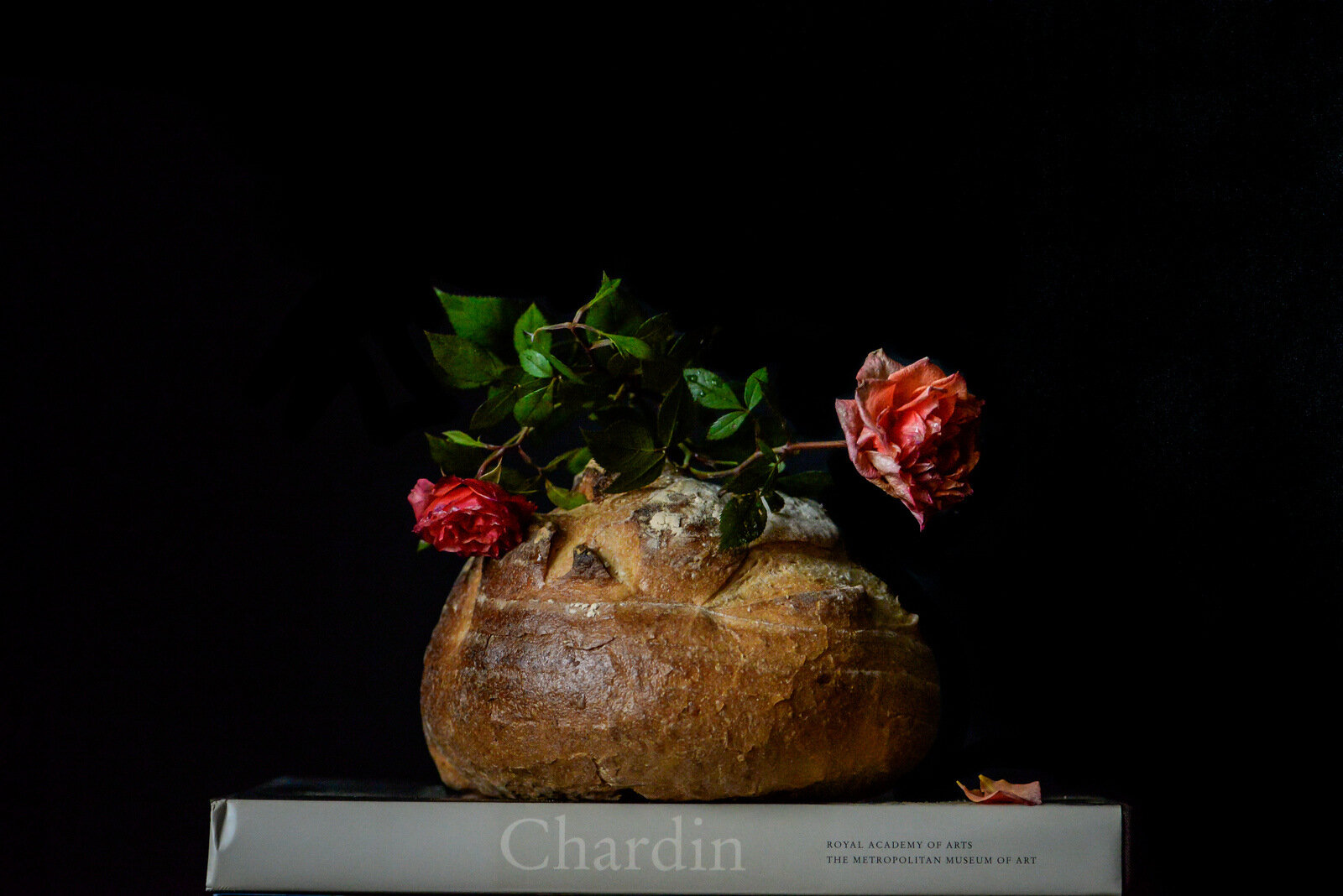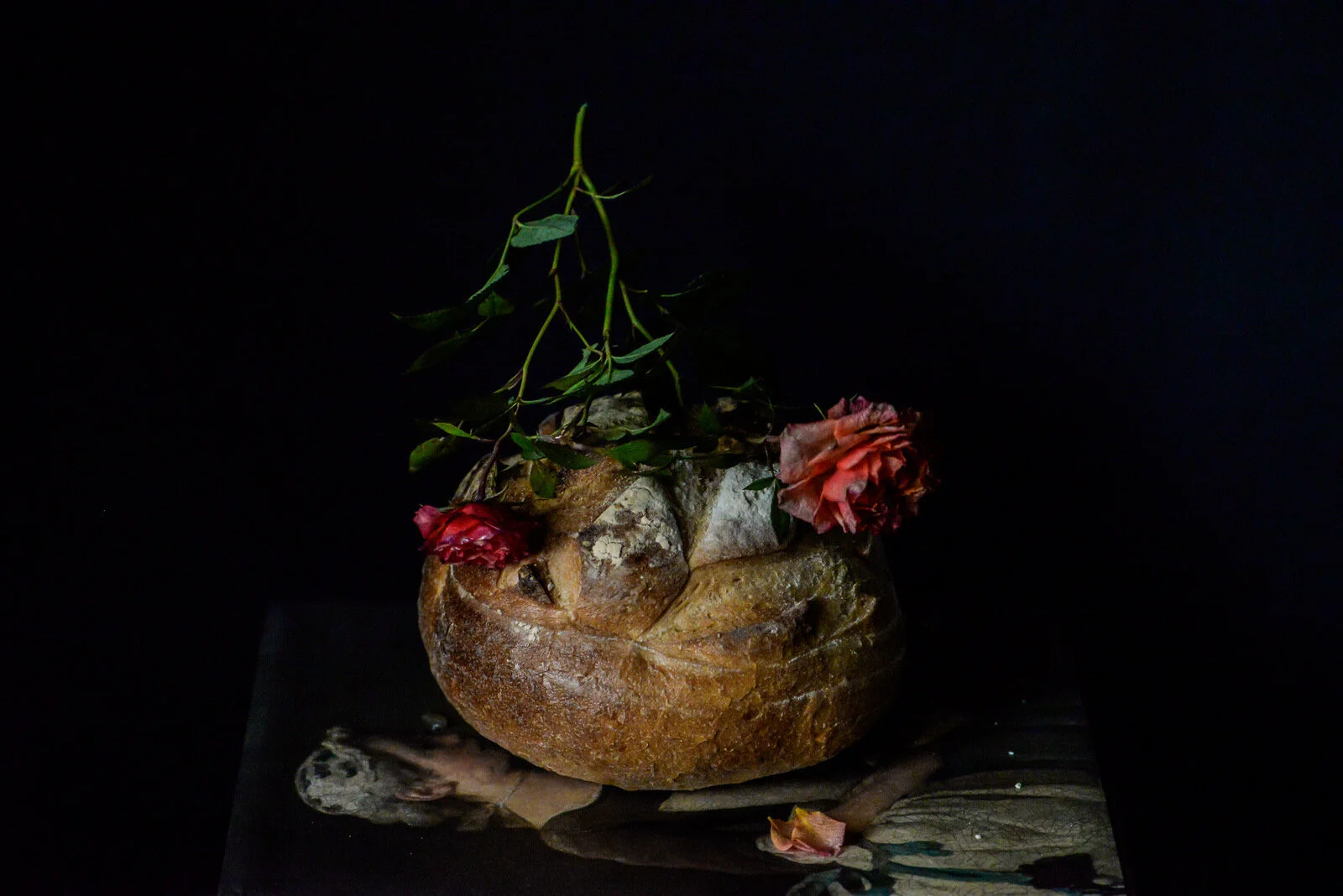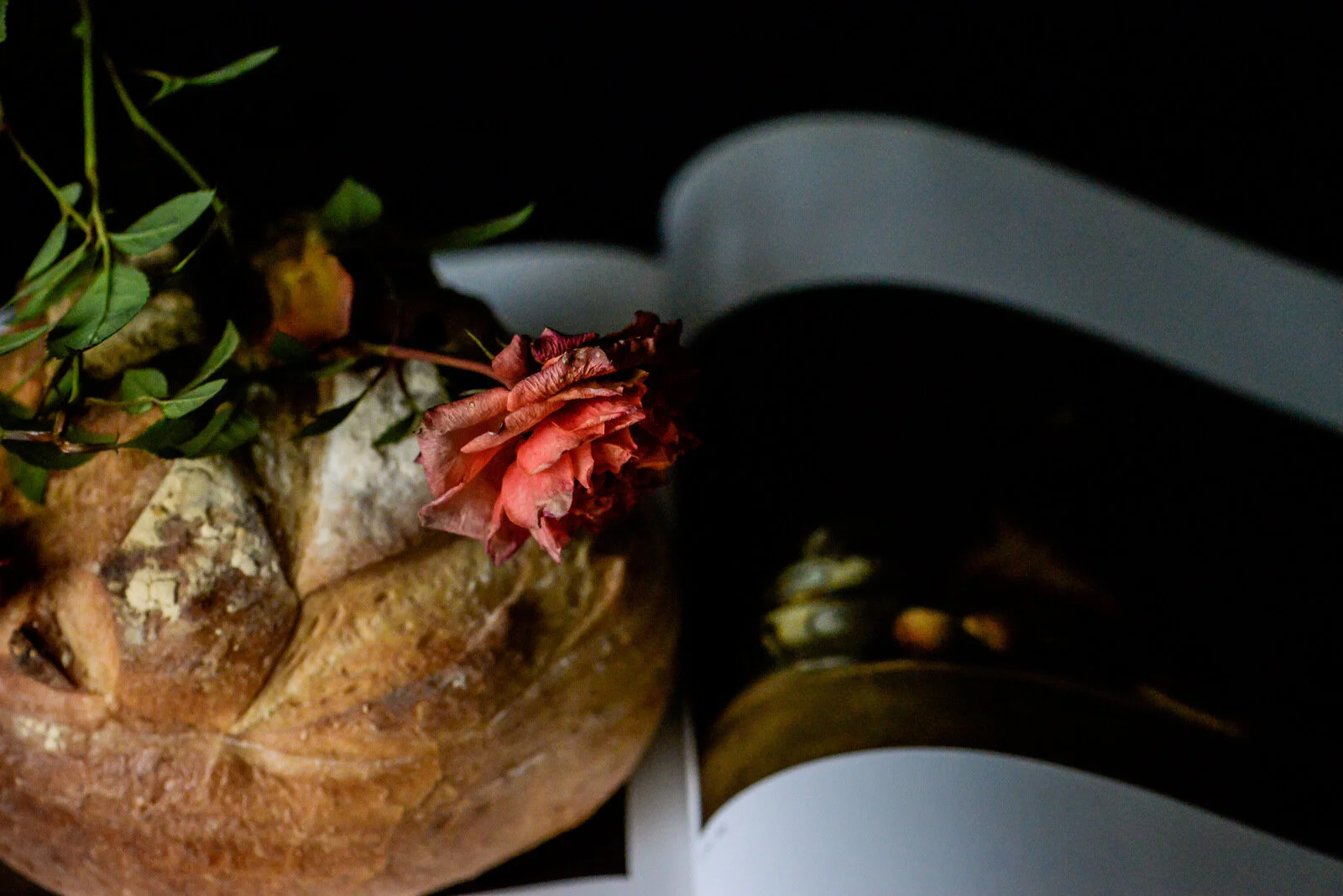The Poetry of Chardin
I’ve been thinking about Chardin this week, I suppose because we bought a loaf of bread at the Italian Centre in our neighbourhood. I took a lot of permutations of still lifes using books, this loaf, various other objects and fruit. But in the end the one I liked best was the one with the flowers on the bread atop the Chardin book. It’s not very like Chardin’s famous Still Life with Brioche. But I hope it captured a mood. A mood of longing for Chardin….if that makes sense. He was a poetic painter, and had his own handwriting not seen before or since. You can view all his work here.
We’ve seen a number of Chardin paintings in person over the years, including the Brioche painting. But I can’t help but think I’d see them differently now. Chardin famously said, “Who said one paints with colors? One employs colors, but one paints with feeling.”
An expert on Chardin said, “It's very difficult to speak of Chardin. I mean he's the reverse of an artist you can speak of.” In the same article about the Chardin show in 2000, the idea that Chardin inspires us to create our own still lifes in our home rings true for me. The writer says:
“It's also, perhaps, his duty as guardian of the French national patrimony. There's something "very French" about Chardin and it goes to the heart of the national culture and its exportability. The 18th-century critic and philosopher Diderot enthused about Chardin's still lifes as if directing readers to re-create them at home - “suspend a river bird by one leg. On the dresser below imagine some biscuits...” and today you can get that Chardin feeling by shopping for French produce at your local supermarket. On a table arrange some paté and a glass of red wine and you've got that particular French aesthetic of the everyday that appears for the first time in Chardin's paintings and made him a cult figure for modern French artists and writers. The sense that food and wine are themselves culture still pervades French art and life. It's what everyone who eats a slice of Brie is buying into.”
After looking at our Chardin book, I did have the urge to pile up strawberries in a bowl, and to get out some eggs, and peaches. The poetry in his paint strokes and in his rendering of imperfect objects is what holds our attention, I think.
In another article, Tom Lubbock talks about how painting can represent either the marred or immaculate, and how Chardin fits into the marred category.
“In art, the dispute between the marred and the immaculate goes deeper than subject matter. It is a central choice in the use of painting. Oil painting, as it happens, is good at both the rough and the smooth. It can give the world an exquisite, flawless surface, and, equally, it can create aged, weathered, fractured textures. Both renderings are among its excellences. Masters of the immaculate include Bronzino, De La Tour, Ingres. Masters of the marred are Titian, Rembrandt, Chardin.
Glass of Water and Coffee Pot is one of Chardin's late still lifes. Simplicity rules. On a shelf or tabletop sit the title contents, plus three bulbs of garlic, a sprig of herb, a garlic core. It is obviously an artificial setup. No cookery or meal could account for this gathering of things. The picture has a formal story. It's interested in shapes, colours, textures. It brings these things together for the sake of what they look and feel like.”
A photograph is not a painting. Their goals are quite different. But of course there are a lot of similarities, or can be. I’m trying to get at something dark, something with feeling, but also something formal. Something that’s a little bit humorous, too, as anything that tries to remind you of something else can be.
All I know is that when I pick up the camera and get messing around, I feel happy. Which is pretty much all the justification one needs to do a thing, don’t you agree?
2019







